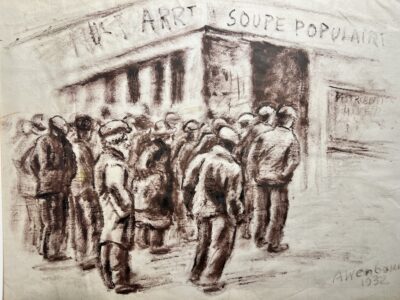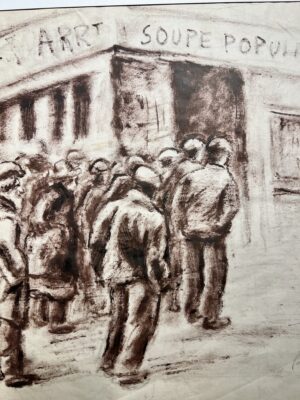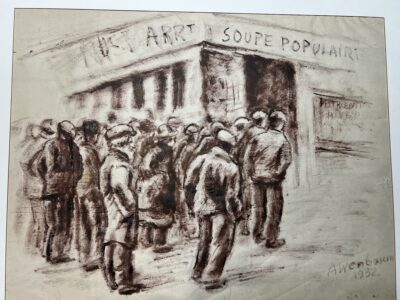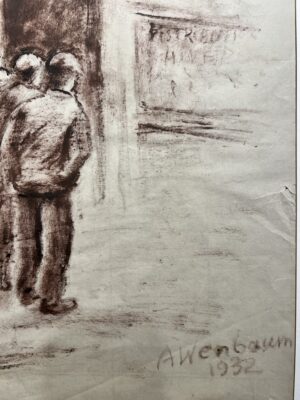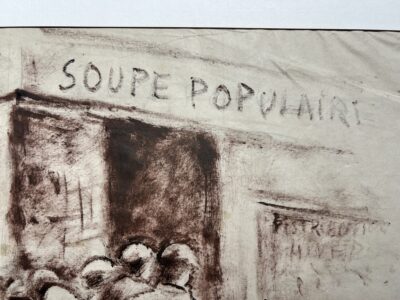Abraham Weinbaum (1890-1943)
Jewish Painter life
16×21 inches, oil pastel on paper.
Available
INQUIRY
Abraham Weinbaum (1890-1943)
Abraham Weinbaum, also known as Albert Weinbaum, was a Jewish painter born in 1890 in Kamenets-Podolsk (present-day Ukraine) and was closely associated with the early 20th-century Parisian art scene, particularly the École de Paris. After studying art in Kraków under the guidance of Joseph Pankiewicz and spending time in Odessa, he moved to Paris in 1910. Weinbaum’s work primarily includes portraits, still lifes, cityscapes, and themes drawn from Jewish life and biblical stories, rendered in a style influenced by both realism and modernism.
He gained recognition by participating in notable art exhibitions, such as the 1922 International Exhibition in Düsseldorf, and regularly exhibited at Paris Salons, including the Salon d’Automne and the Salon des Tuileries. During the onset of World War II, Weinbaum served in the French army, but he and his family eventually fled to Marseille to escape the Nazi occupation. Sadly, in 1943, they were deported to the Sobibor extermination camp, where he perished.
Weinbaum’s work has historical significance, both for its artistic merit and as a representation of Jewish life and the tragic fate of many artists during the Holocaust. His contributions are celebrated among the artists of Montparnasse, where his legacy remains tied to the vibrant and tumultuous Parisian art world of the early 1900s
Abraham Weinbaum was tragically killed in 1943. After fleeing to Marseille, he and his family were captured by Nazi forces, interned in France, and ultimately deported. He was sent to Sobibor extermination camp, where he perished.
.

